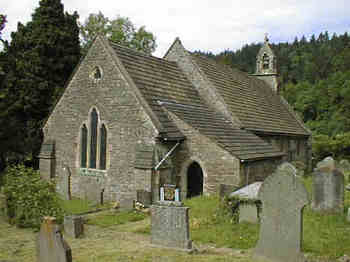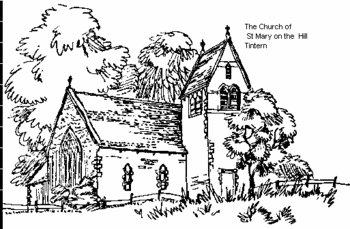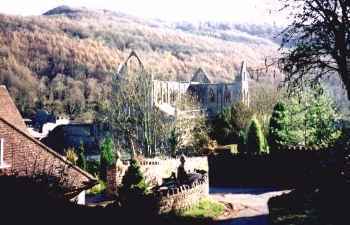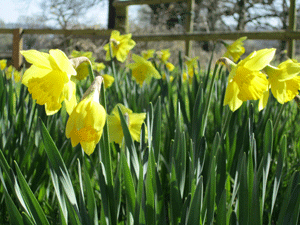Histrical Places of Interest
Tintern has been a settlement long before the Abbey was built
St Michael's Church
Religion has always played a major role in the life of Tintern Village. As far back as 784 there was a Celtic Church on the site of St. Michael's Church . It has remained a place of worship and reflection ever since. This was at the end of the village called Tintern Parva (or little Tintern).

St Mary's Church
The other end of the village was served by St. Mary's Churc h . Sadly this burnt down in 1977 but still possesses fantastic views of the Abbey. The cemetery is still open to the public and like St. Michael's still allows public access.

The Limekiln and Quarry
The limekiln and associated quarry area are a scheduled ancient monument, located in close proximity to the Wye Valley Walk (opposite the Abbey behind the Abbey Hotel). The quarry features
are clear and impressive and the limekiln is in good condition, illustrating key features such as poke holes although the charge hole is no longer extant. The limekiln and the surrounding site have good potential for increasing understanding of the lime
industry.
The work planned within the ongoing work by the Overlooking the Wye Project, will be to consolidate the stonework,
excavate the charge hole, remove some vegetation, add interpretation and mprove
access.

The Water Wheel at the Abbey Mill was
The Lower Wireworks
These works form part of wider proposals within the bid to improve visitor access in
the Tintern / Angidy corridor, including proposed new car parking and visitor
orientation at the Lower Wire Works (Sawmill) site in Tintern village, new access
routes, including the replacement and updating of the Tintern Trail and the complete
overhaul of visitor and pedestrian signage within Tintern, to improve visitors
orientation, and enhance walking links between the various attractions (Tintern
Abbey, Abbey Mill, Lower Wireworks site etc).
The Angiddy Furnace
This site represents early industrial development, dating back to
the mid-16th century, when the Angiddy valley was chosen as the location for a new
ironworks due to the availability of water power, charcoal (from the surrounding
woodland) and local iron ore. The Angiddy furnace was built in 1650 and only
ceased production in 1826 when improved methods of manufacture rendered the
complex redundant. The Angiddy ironworks provides a fascinating example of early
iron production and has historic significance as part of the South Wales iron industry,
which provided most of the pig (or cast) iron in Britain in the 16th, 17th and 18th
centuries. The work planned here is to improve the drainage of the site, cut back the
vegetation, conserve the remaining furnace structures and to increase the level of
interpretation provided.
And whilst looking after it's history the village is moving forward to the years ahead
Histrical Places of Interest Statistics: 0 click throughs, 729 views since start of 2024
Attraction in Tintern, Chepstow Monmouthshire
Entrance Charge
Opening Times
-
Histrical Places of InterestMonmouth Road Tintern, Chepstow Monmouthshire NP16 6SG UKphone: 01291 689920 fax:Our Website
News & Special Offers


